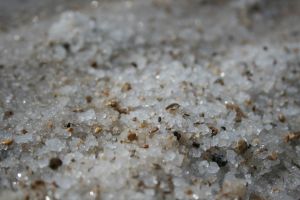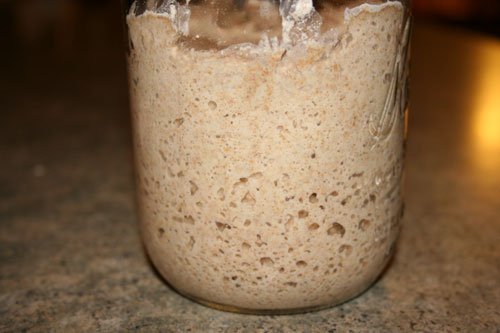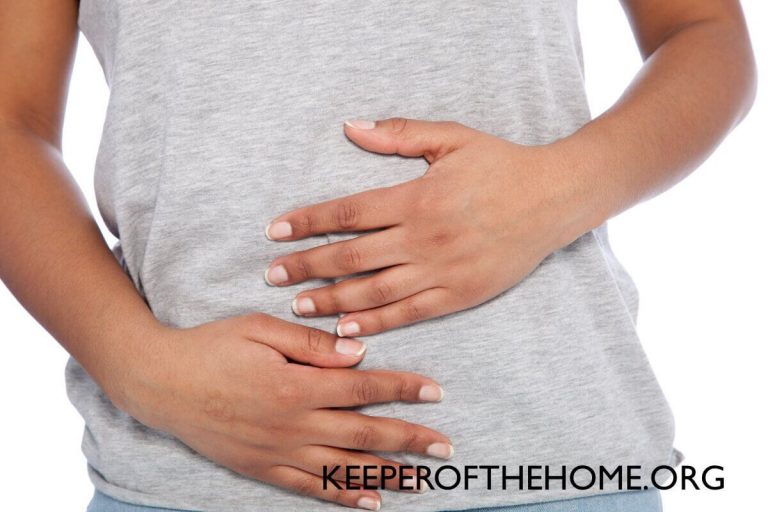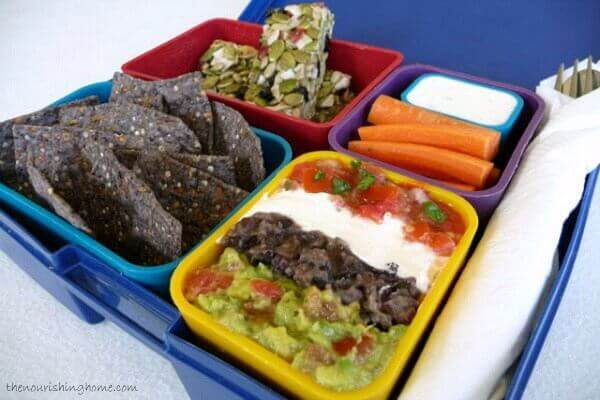Trace Minerals Make a Major Difference

Sure, we all know that it’s important to get the “biggies” (macrominerals) into our diet: calcium, magnesium, potassium, etc.
Did you know, though, that there are over 30 other minerals which our bodies need in minute, trace amounts, but without them it cannot function at it’s full potential and disease may even develop?
These minerals, often called “trace minerals“, include well known minerals such as iron, zinc and iodine. They also include many lesser known minerals, like selenium, silicon, manganese, boron, copper, cobalt and even germanium!
So how do you make sure that you and your family are getting enough of these all-important nutrients in your diet?
Increase your body’s uptake of minerals by:
1) Ensuring that you are getting plenty of fat-soluble vitamins (A, D, E and K) and good cholesterol in your diet. This strengthens and supports both your glandular and digestive systems, to make sure that your body knows which and how much of each of the minerals to absorb.
Good foods for this include: butter, eggs, liver and other organ meats, fish and seafood, cod liver oil, whole grains, nuts, seeds, and dark leafy vegetables.
2) Eating a varied and balanced diet, including lots of fresh vegetables and minimal sugar. Many minerals require other minerals and vitamins to be present for them to be well absorbed. An example of this is the way that iron is better absorbed when plenty of Vitamin C is present at the same time. As well, keeping our bodies more alkaline (as opposed to being too acid) promotes better nutrient assimilation overall- too much sugar or processed foods and not enough vegetables can lead to a more acid state in the body.
3) Watching out for substances that impair mineral absorption, or actually pull it out of our bodies. For instance, phytic acid in improperly prepared grains (oh dear, I’m harping on this again– must be important! :), oxalic acids in green leafy vegetables like spinach and swiss chard (this minimizes when they are lightly cooked), and tannins in black teas.
Where to find trace minerals in abundance:
Bone Broth: An excellent source of both macro and trace minerals, as well as beneficial gelatin. These are simple to learn to make and have so many health benefits, in addition to being delicious!
Sea Salt: We’ve all heard that we should reduce our consumption of salt, but it’s really only regular table salt that we should be concerned about. Good quality, unrefined sea salt can contain up to 92 minerals (while table salt contains only 2- sodium and chloride.) See this excellent article on choosing sea salt over table salt.
Personally, I buy Redmond’s RealSalt, from the Utah flats (left from ancient sea beds, from when water used to cover Utah). On the back of the package, it lists calcium, potassium, sulfur, magnesium, iron, phosphorus, idodine, manganese, copper and zinc, in addition to other trace minerals in minute quantities (it claims to contain over 50 minerals). Some other great brands are Celtic Sea Salt, Flower of the Ocean, and Himalayan Pink Salt. These can be purchased from Azure Standard (though there are many other places to buy them as well).
Kelp: This is a type of seaweed which is dried and used in powdered form. It has a salty (though slightly fishy) taste. It contains 28% minerals, including a rich variety of trace minerals (as do most foods from the sea). See a nutritional analysis here.
Kelp can be added to foods as a seasoning, in small amounts. When I do this, in my spaghetti sauce, bone broths, soups or stews, etc. it can’t be tasted (as long as I keep it minimal- under 1 tsp). This might not seem like much, but when used consistently it is just another way to add minerals to our overall diet.
Clay: Though this is one area I haven’t delved into yet, I am interested to try. Apparently, particular types of clay contains large numbers of minerals, and various cultures have traditionally used these to supplement their diets. I first heard of this in Nourishing Traditions, where Sally Fallon recommends Azomite Mineral Powder as a nutritional supplement (see this article by Sally on Superfoods). I found something similar at Azure, called Redmond Clay (by the same makers of my sea salt). Have any of you tried using clay powders as a supplement? What are your thoughts?
Nutrient and Mineral Rich Foods: Simply by consuming a good variety of foods that are rich in these essential minerals will help to ensure that we are getting enough of them. Some excellent foods to consume regularly include: molasses, nuts and seeds, garlic/onions, liver, butter, seafoods and fish, whole grains and dark leafy vegetables.
For more information on minerals, and how to include them in your diet, see this Mineral Primer from Weston Price (and really, is it pri-mer or pry-mer? Our pastors began the debate over this great book, and I haven’t made up my mind yet).





Hello! Just started following your blog — I like it! Keep up the good work!
Also, at least in the US, I never hear anyone say “pri-mer” (short “i”), only “pry-mer”. Interesting that it’s up for debate in Canada! 🙂
We mix kelp powder into peanut butter with some agave and make peanut butter balls. Thanks for all of this good information.
wow, what a great post! 🙂
happy thanksgiving to you and your fam!
I was in Zambia two weeks ago and all the markets sold clay everywhere. It is something pregnant women traditionally eat to get extra nutrients. It might look a little odd on Western grocery shelves, but there it was common place.
Great Post! My family likes nori as well (I don’t think it’s as high in minerals as some seaweed, but still good for you. 🙂 )
I might have to check out the clay. I have been taking trace mineral supplements, which have done wonders for keeping my thyroid active:) Glad you mentioned the clay at Azure; it will be on my shopping list next month. Happy Thanksgiving:)
Stephanie:
I noted the the minerals in Sea Salt include iodine. Anyone with an alergy to Shellfish should avoid iodine. I learned the hard way with some vitamins I took.
Nana
I just started using azomite powder. It’s very cheap–I got mine from wheatgrasskits.com. They sell it for as a soil amendment for growing healthy wheatgrass. It’s sandy, so it takes a few times mixing with water (mix, drink, swallow, keep mixing, drinking swallow, mix drink swallow–you get the idea). Swish your mouth out afterwards to get the grit out–but it’s not that bad. There is no gagging, the flavor is very neutral, like water. I also used it on my houseplants and noticed that they perked up right away. I noticed that it has a good effect on the colon. In my estimation it is a good product. Why not try it?
I understand that the azomite powder from Utah and the salt from Utah do contain lots of trace minerals….my concern though is radiation. I know people are living there, but I had read a post from some other website for adding trace minerals to the garden soil and he mentioned the radiation issue, because he tested the azomite. Didn’t think much of it until reading an article in a national geographic magazine about the history of the atomic bomb, and this gentle now in his fifties I believe who recalls when he was just a teen, out in the hay fields seeing a darkish blue haze and his skin burning while he was wiping off sweat, he developed thyroid cancer in his teens and has been dealing with it his whole life and the surgeries. As I understand the break down of radation is a long drawn out process so not sure where the azomite or the Redmond salt is collected in Utah but I sure thought twice about buying the salt again. No offense Utah. It is what it is.
Trace minerals and electrolytes provide essential nutrients for healthy bodily metabolic functions.Electrolytes are vital for the proper functioning of your body because they are used by your body to maintain voltages across the cell membranes and for carrying electrical impulses through themselves to the other cells in your body.Electrolytes are actually minerals that carry and produce an electrical charge in your blood and bodily fluids and are essential for the optimum functioning of your body’s numerous metabolic processes.I want to thank your website for mentioning the importance of trace minerals.